Super Bowl XLIII/43 2009 (Page One)
Geting Introducted And Finding The Bartender
Get The Party Started...
In professional American football, the Super Bowl is the championship game of the National Football League (NFL). The game and its ancillary festivities constitute Super Bowl Sunday. Over the years it has become the most-watched U.S. television broadcast of the year, and has become likened to a de facto U.S. national holiday.
Linebacker Vegetable Tray With Ranch Dressing
Fumbled Mixed Green Salad, three Dressings
Buffalo (Safety) Wings
Offside Deviled Eggs
Quarterback Quesadillas
Touchdown Hot Nachos Cheese Station
Hall of Fame Hot Dogs
4th Down Old Ranch Chili, Cheese and Onions
Field Goal Chicken Strips with Dipping Sauce
All-Pro Potato Skins
Running Back Pizza
Roughing the Passer Chips & Salsa
Raffles every Quarter
Game Day Attire

Today We Celebrate At Old Ranch
We have about 200+ pictures from the Super Bowl Old Ranch Blowout! One great afternoon with friends and family. Please join the fun.
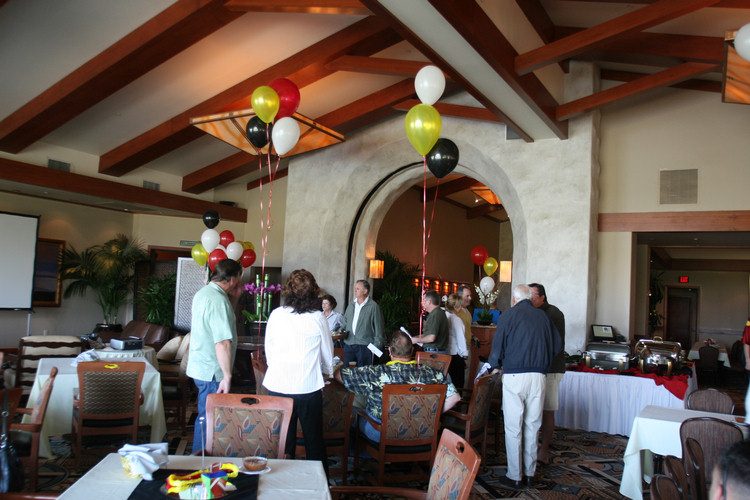
People are arriving right on time!

Putting on the last minute decorations, Veronica uses her artistic skills
Did You Know? - Veronica is a female given name, the Latin form of the Greek name Berenice, Φερονίκη, which in turn is derived from Greek pherein (bring) and nikê (victory), meaning "she who brings victory"

Your friendly photographer, Paul

Matt watches as the goodies arrive from the kitchen

Sous Chef David is proud of the fixings
Did you know? "Chef" (from Latin caput) is the abbreviated form of the French phrase chef de cuisine, the "chief" or "head" of a kitchen. The title chef in the culinary profession originates from the roots of haute cuisine in the 19th century. The English use of the word chef has become a term that is sometimes used to mean any professional cook, regardless of rank.
Did you know? The sous-chef de cuisine (under-chef of the kitchen) is the direct assistant of the executive chef and is second in command. They may be responsible for scheduling, and filling in when the executive chef is off-duty. The Sous Chef will also fill in for, or assist the chef de partie (line cooks) when needed

David Longo exercises his muscles and demonstrates how to carry drinks

Nope! Chris is NOT on the internet! He is Texting to the kitchen!

Raymond goes over the checklist one more time!

Mitch and Louisa join in the festivities
Did you know? The name Louisa comes from German and French roots and means similar things in both languages. The female name Louisa is related to the male name Louis and takes on a similar meaning to that name. The original French female form of Louis is Louise, and Louisa is another feminine form stemming from these two names.
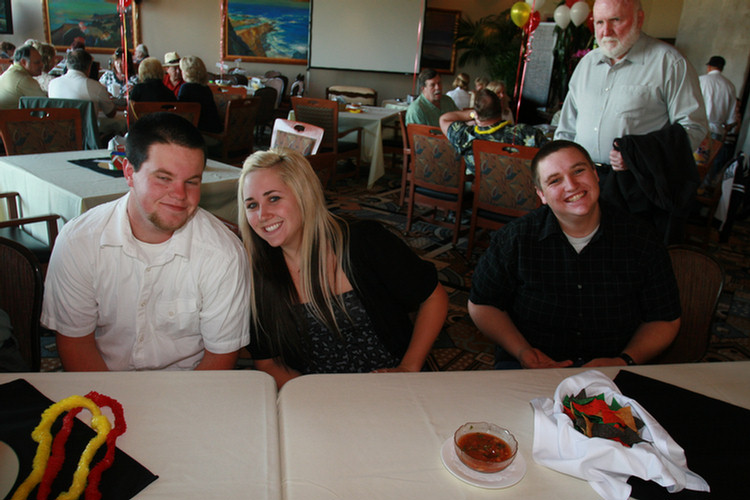
Zachary, Lexi and DL are looking for the food!

Juan is ready to go making sure everybody is having a great time!

Red and Yellow Leis must mean something?
Did you know? Lei is a Hawaiian word for a garland or wreath. More loosely defined, a lei is any series of objects strung together with the intent to be worn. The most popular concept of a lei in Hawaiian culture is a wreath of flowers draped around the neck presented upon arriving or leaving as a symbol of affection. This concept was popularized through tourism between the Hawaiian Islands and the continental United States in the 19th and 20th centuries

The buffet was under attack by all.... Great food for a Super Bowl
Did you know? While serving oneself at a meal has a long history, the modern buffet was developed in France in the 18th century, soon spreading throughout Europe. The term originally referred to the sideboard where the food was served, but eventually became applied to the form. The buffet became popular in the English-speaking world in the second half of the nineteenth century.
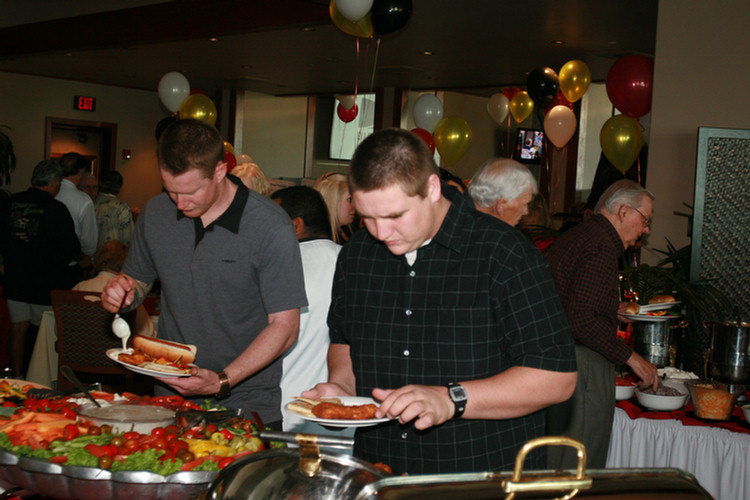
Placement of the food onto the plates is an artform!

The smile of success! DL has it mastered
Did you know? Claims about the invention of the hot dog are difficult to assess, because various stories assert the creation of the sausage, the placing of the sausage (or another kind of sausage) on bread or a bun as finger food, the popularization of the existing dish, or the application of the name "hot dog" to a sausage and bun combination.
The city of Vienna traces the lineage of the hot dog to the Wienerwurst or Viennese sausage, the city of Frankfurt to the Frankfurter Wurst, which it claims was invented in the 1480s and given to the people on the event of imperial coronations, starting with the coronation of Maximilian II, Holy Roman Emperor as King; the hot dog has also been attributed to Johann Georg Lahner, a 18th/19th century butcher from the Bavarian city of Coburg who is said to have invented the "dachshund" or "little-dog" sausage and brought it from Frankfurt to Vienna.
Around 1870, on Coney Island, a German immigrant named Charles Feltman began selling sausages in rolls.

Enjoying the pre-game festivities

The buffet was a popular place!

Shirley Barto visits the event
Did you know? Shirley means bright grassland, sunny glade. Related names are: Sharlee, Sharly, Shaylee, Shelley, Sherlee, Sherley, Sherli, Sherlie, Sherly, Sherrlie, Sheryl, Shirelee, Shirell, Shirelle, Shirely, Shirl, Shirlea, Shirleen, Shirleigh, Shirlena, Shirlene, Shirlina, Shirlinda, Shirline, Shirlley, Shirlynn, Shurlee

The Jelly Bean pools are getting underway! Anna assures all is going well!
Did you know? The gummy interior of the jelly bean may trace its origins back hundreds of years to a candy called Turkish Delight, while the outside shell is essentially the same as that developed in the late 17th century for Jordan Almond. The earliest known appearance of the modern jelly bean was during the American Civil War when William Schrafft of Boston promoted sending the candy to soldiers in the Union Army.
It was not until 1930 or so that jelly beans became an Easter candy, presumably from their resemblance to Easter eggs. Their egg-like shape was then associated with the Easter Bunny, who gave out eggs on Easter.A large jar of jelly beans sits prominently on the cabinet room table during Reagan's presidency.
In the 1980s, when Ronald Reagan was President of the United States, he was known for keeping a jar of Jelly Belly jelly beans on his desk, which was credited with helping to increase the candy's popularity in the U.S

We thought they were smiling at the camera! Check the television picture!
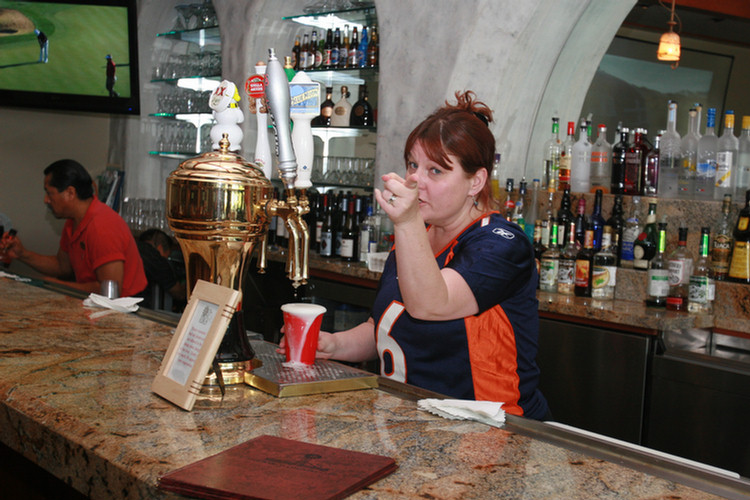
"You are stealing a piece of my soul when you take a picture"... Says Dawn!
Did you know? : In many religions and parts of philosophy, the soul is the immaterial part of a person. It is usually thought to consist of one's thoughts and personality, and can be synonymous with the spirit, mind or self. In theology, the soul is often believed to live on after the person’s death, and some religions posit that God creates souls. In some cultures, non-human living things, and sometimes inanimate objects are said to have souls, a belief known as animism.
The terms soul and spirit are often used interchangeably, although the former may be viewed as a more worldly and less transcendent aspect of a person than the latter. The words soul and psyche can also be treated synonymously, although psyche has relatively more physical connotations, whereas soul is connected more closely to metaphysics and religion.

"Dawn, don't point that finger at me! It has a nail in it!"

"Now you made me spill the beer!"

The original Bad Man Jose' He pours a mean drink!

They found the food! Teenagers!
The Game Begins
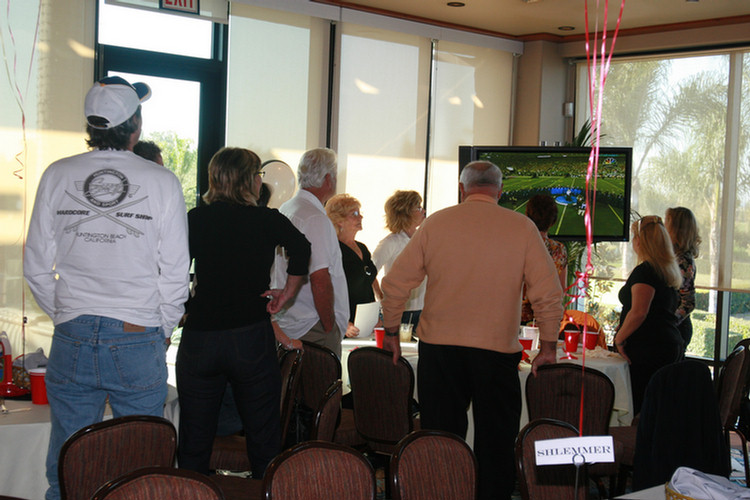
Our memberships stands for the singing of God Bless America and the National Anthem
Did you know? "The Star-Spangled Banner" is the national anthem of the United States of America. The lyrics come from a poem written in 1814 by Francis Scott Key, a then 35-year-old amateur poet who wrote "Defence of Fort McHenry" after seeing the bombardment of Fort McHenry at Baltimore, Maryland, by Royal Navy ships in the Chesapeake Bay during the War of 1812.

Proud Americans


Flip The Coin And Lets Begin
Did you know? The historical origin of coin flipping is the interpretation of a chance outcome as the expression of divine will. A well-known example of such divination (although not involving a coin) is the episode in which the prophet Jonah was chosen by lot to be cast out of the boat, only to be swallowed by a giant fish (Book of Jonah, Chapter 1).Coin flipping as a game was known to the Romans as "navia aut caput" (ship or head), as some coins had a ship on one side and the head of the emperor on the other. In England, this game was referred to as cross and pile
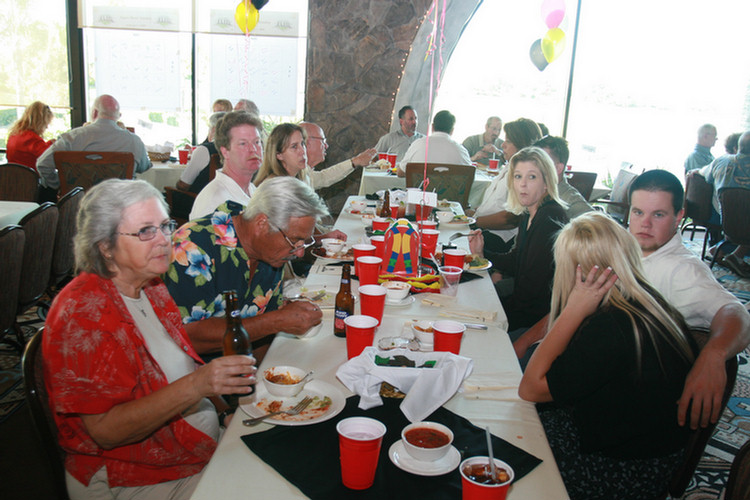

Ted has the best seat in the house! Near the beer!

They are ready for the game

Matt is on duty today so he get's to drink water!
Did you know? Stairs, staircase, stairway, stairwell, and flight of stairs are all names for a construction designed to bridge a large vertical distance by dividing it into smaller vertical distances, called steps. Stairways may be straight, round, or may consist of two or more straight pieces connected at angles.Special stairways include escalators and ladders. Alternatives to stairways are elevators and inclined moving sidewalks.

Anna keeps track of the score
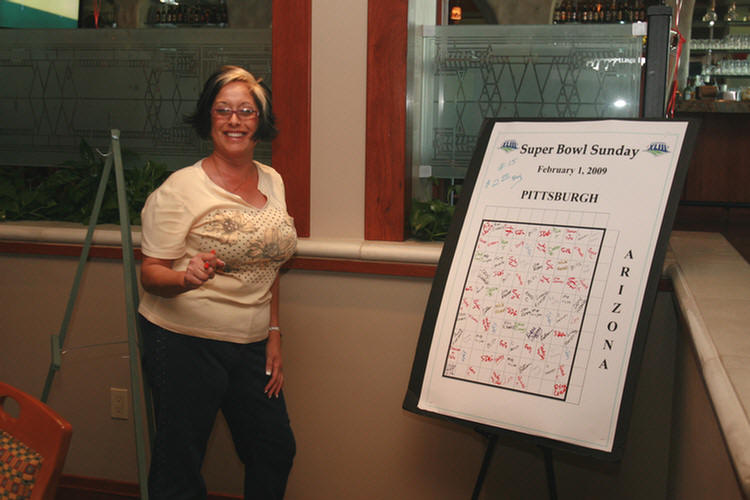
"It's simple... I just make it look difficult"
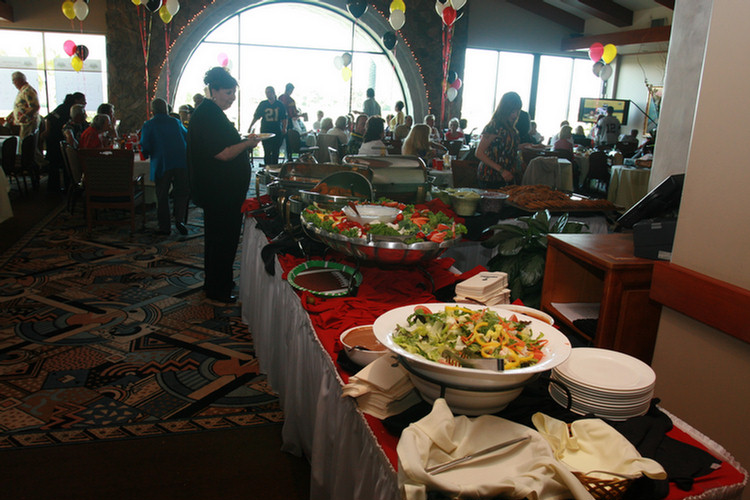
The crowd watches the first few minutes before attacking the buffet again
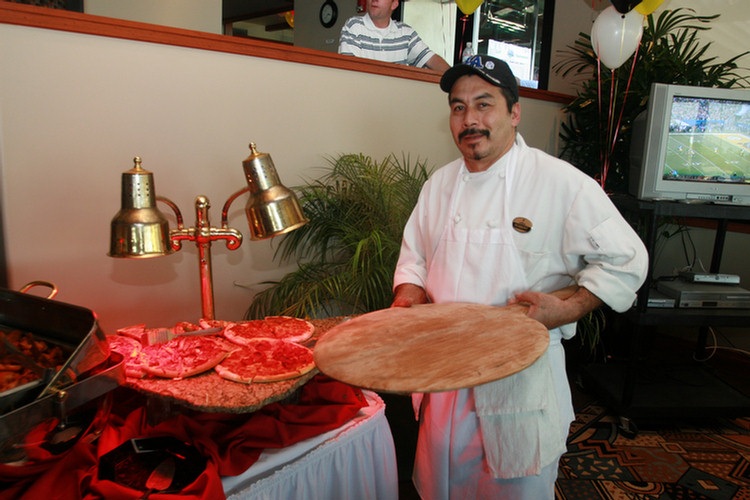
A February Santa Clause... He makes the children very happy with Pizza

Robert delivers the goods... We call him Mr. Pizza
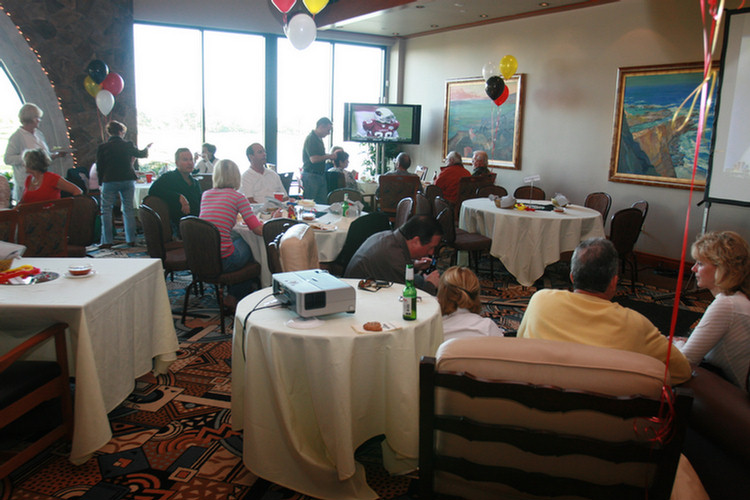
The whole house is wired with video

Decisions decisions! What do I do now?
Did you know? In the United States and Canada, a cookie is a small, flat-baked treat, containing milk, flour, eggs, and sugar, etc. In most English-speaking countries outside North America, the most common word for this is biscuit; in many regions both terms are used, while in others the two words have different meanings—a cookie is a plain bun in Scotland. Its name derives from the Dutch word koekje or (informal) koekie which means little cake, and arrived in the English language through the Dutch in North America. It spread from American English to British English where biscuit is still the more general term.
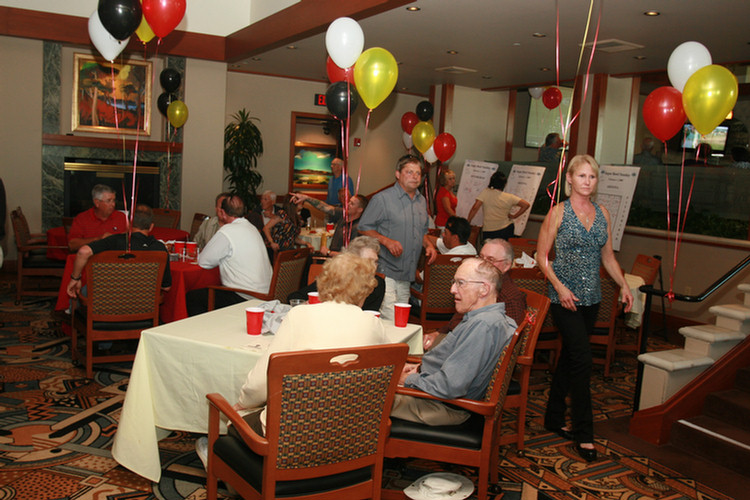
It's getting busy in the pit
Did you know? The first balloon was (called the balloon of pie) invented by Brazilian-born Portuguese priest, Bartolomeu de Gusmão, and the first public exhibition was to the Portuguese Court on August 8, 1709, in the hall of the Casa da India in Lisbon. The rubber balloon was invented by Michael Faraday in 1824; it was inflated with hydrogen and used in his experiments with that element.
Rubber balloons were soon after sold for a penny a piece in parks and circuses in America. The more familiar latex balloons of today were first manufactured in London, 1847, by J.G. Ingram, but mass production did not occur until the 1930s. According to the Reader's Digest, children and adults send up a billion ballons each year in celebration
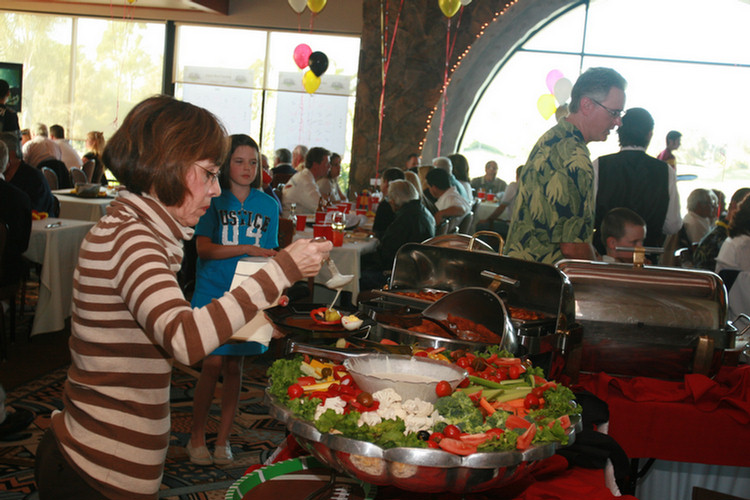
The buffet is again seeing serious action
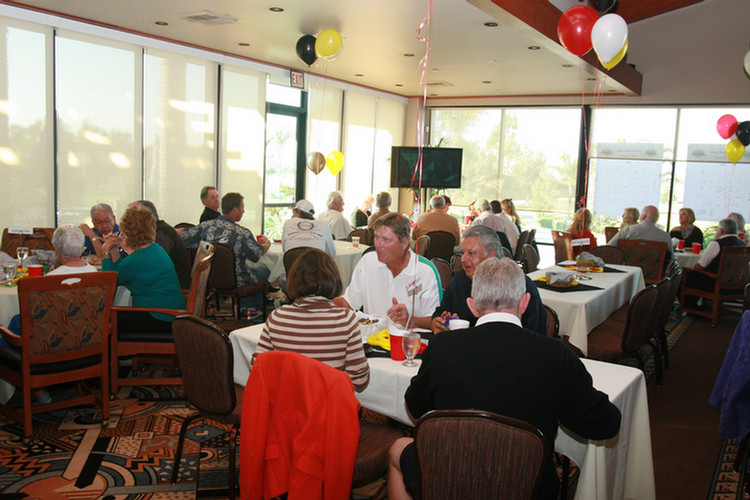
Great crowd

Seventeen at the Liles' table
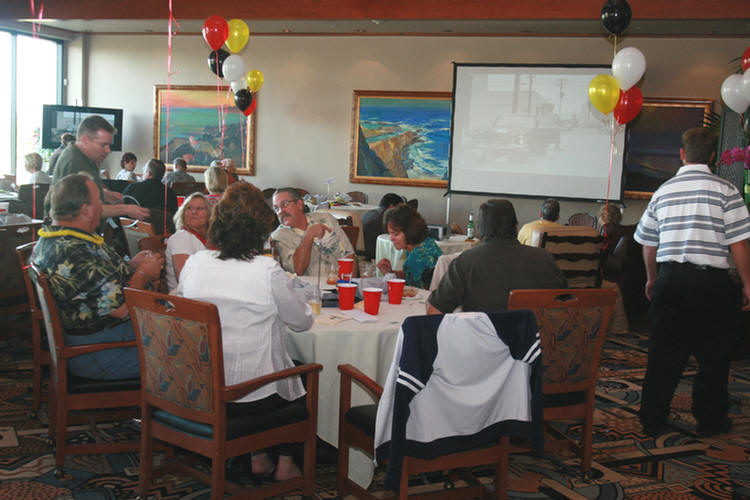
It's getting close to 3:30
